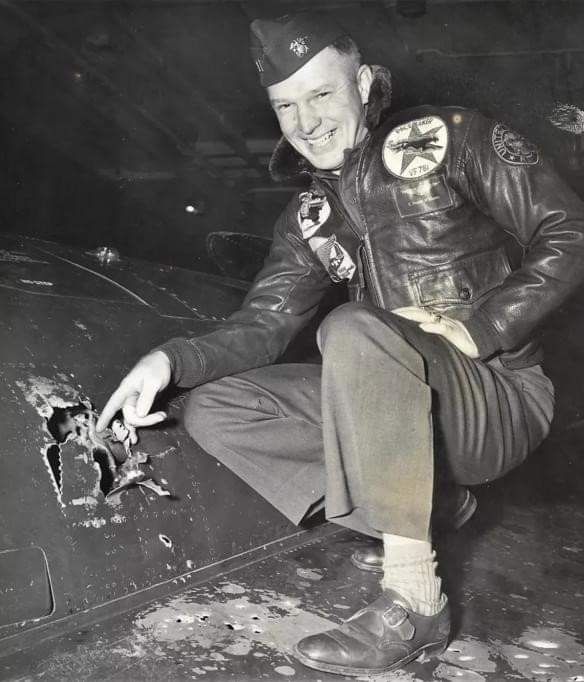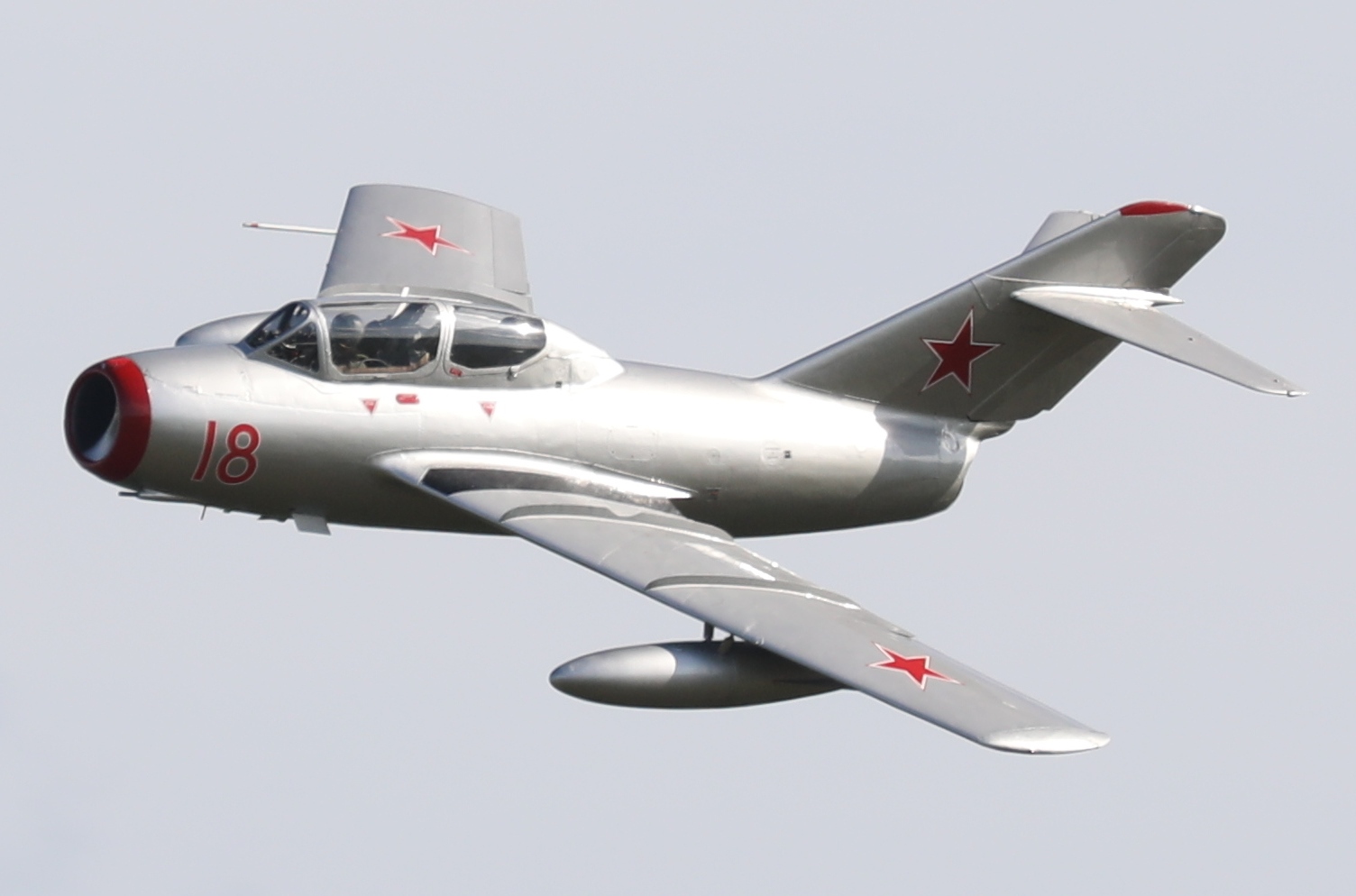Seventy-two years ago, a US Air Force (USAF) fighter pilot engaged in a secret but brave solo dogfight against seven Soviet MiG-15 fighters and shot down at least four of them–all by himself.
The legend dates back to November 18, 1952, during the Korean War. The hero of this story is retired US Navy Captain Elmer Royce Williams. In 2022, Secretary of the Navy (SECNAV) Carlos Del awarded the pilot the Navy Cross.
However, there is currently an ongoing campaign to get Williams the Medal of Honor, the highest military award in the United States. And, it is not without a reason.
The Korean War started in 1950 with an invasion of South Korea by communist North Korea. In response, the United States spearheaded a massive UN intervention in favor of the South, whereas the North was supported by the Soviet Union and China. As the conflict progressed, several US aviators made history in what was their jet-to-jet combat against Soviet aircraft, and vice versa.
Elmer Royce Williams was one such pilot. He was known for his solo dogfight with multiple Soviet pilots at once, which was later referred to as “one of the greatest feats in aviation history.”
Royce Williams Solo Dogfight That Made History
On November 18, 1952, Retd. Capt. Williams, who was then a Lieutenant in the US Navy, took off in his F9F-5 Panther fighter jet from the USS Oriskany aircraft carrier over the turbulent Sea of Japan. He was accompanied by Lt (jg) Dave Rowlands, his wingman, and two other fighter jets piloted by his comrades.
The Panther was an early carrier-based fighter, the first to engage in air combat. The US Navy and Marine Corps used the aircraft extensively during the Korean War.
“We started to rendezvous with each other as we climbed out of the clouds,” Williams recalled in an interaction. “And that’s when we heard from the combat information center that there were inbound bogeys from the north,” he said. During that time, ‘Bogey’ was used as slang for hostile/unidentified aircraft in combat.
As per reports, seven MiG-15s (NATO name: Fagot) had taken off from a Soviet base in Vladivostok. The US military intelligence deciphered that the MiGs were likely on a mission to exact revenge for a major airstrike conducted earlier in the day on an industrial facility in northeastern North Korea, just about 8 kilometers from the Soviet border.
The radar spotted the bogeys at a distance of about 80 nautical miles or about 148.16 kilometers. Soon after this, William’s flight was aimed at the Bogeys.

However, just then, one of the F9F-5 Panther fighter jets experienced a fuel pump issue, forcing it to return to the aircraft carrier with its wingman as an escort. This essentially meant that Lt. Williams and his wingman were alone responsible for protecting the carrier from the MiGs heading towards it.
The MiG-15 made its first appearance over Korean skies in late 1950, with Soviet pilots surreptitiously flying combat missions to support North Korea. These agile MiG-15 Soviets proved to be a bane for US ambitions to achieve air superiority. They demonstrated superior maneuverability and firepower, which American pilots struggled to counter. However, it was not the MiG’s day that day.
The F9Fs flown by Lt William and his wingman were soaring above 16,000 feet when Williams noticed the opponents’ contrails–line-shaped clouds created by aircraft engine exhaust– about 70 kilometers from the carrier. William, nonetheless, kept ascending.
Following this, he radioed back to the Oriskany carrier, saying he had seen the MiGs split into two groups of three and four aircraft.
The Combat Information Centre (CIC) aboard Oriskany radioed Williams not to engage. However, William was left with little choice as the MiGs suddenly began firing their 23mm and 37mm cannon. Williams radioed back to the CIC, ensuring his cannons were armed and ready to fire. “We are already engaged!” he said. The combat was now on.
Recalling the incident, Williams said in an account: “The first ones came at us from the right side in a four-plane formation and opened fire. I pulled into a hard-climbing left turn and came around on the Number Four MiG. I fired a burst and hit him solidly in the rear fuselage. He went down smoking, and my wingman then followed him, leaving me alone.” This left William against six Soviet MiG-15s.

The two MiG formations were climbing for altitude to begin attacking dives when Williams ended up on the tail of one and brought down the other. After that, he had to fire cautiously because his aircraft had less ammunition than the MiGs. “They had me cold on maneuverability and acceleration – the MiG was vastly superior on those counts to the F9F. The only thing I could do was out-turn them.”
The remaining five MiGs began taking turns climbing and making passes at Williams, who could only engage a Soviet jet when it passed in front of him or turn rapidly to engage them head-on. Williams shot down three more Soviet fighters for a total of four kills after more than 30 minutes of aerial duel, during which he snapped his head back and forth to gain sight of the adversary, burning the flesh of his neck.
He dove 30 degrees into a snowfall cloud to escape one of the final two MiGs.
“I was turning, and one guy hit me with the 37mm cannon that knocked out my hydraulics,” said Williams, recounting his ordeal.
With his aircraft barely able to fly and no ammunition, he headed back toward the Oriskany and used what flight controls he had left to steer the aircraft. Williams considered ejecting as he plunged deep into the clouds but continued flying. Additionally, he discovered that his plane was uncontrolled below 170 knots, which made the approach risky, given that the Panther typically landed at 105 knots.
Even his descent was not safe. Williams was shot at by several escorting destroyers who thought he was an enemy plane as he got closer to the aircraft carrier.

On board Oriskany, the deck was cleared for the impending crash landing. Williams stated later that he told them that he could not fly slower than 170 knots and that he could see the ship speeding up visibly as she turned into the wind. The Oriskany’s commander eventually steered the ship away from the breeze, enabling Williams to make a straight-in approach.
There were 263 gunshot holes and perforations in his aircraft by the end of it.
Arguably the longest aerial fight in US military history, the battle became one of the most amazing aerial combat exploits for the young naval aviator.
Sworn Into Silence After A Spectacular Victory
Lt. Williams was sworn into silence by his Commanders, who feared an escalation during the Cold War era. In fact, the US Navy and National Security Agency did not document this incident over concerns that admitting it might lead to the Soviet Union joining the Korean War. As a result, it was not included in the Korean War’s declassified American records.
Williams, meanwhile, flew 110 sorties during the Vietnam War while serving in the Navy for another 23 years. When he retired, he had a display case full of awards, including the Legion of Merit with battle “V,” two Distinguished Flying Crosses, and the Silver Star.
It was only after the disintegration of the Soviet Union that records from Moscow started to surface, attesting to the aerial combat fought by Williams.
In 2014, Russian historian Igor Seidov wrote a book titled “Red Devils Over the Yalu: A Chronicle of Soviet Aerial Operations in the Korean War,” which included a complete chapter about this particular combat.
Williams said later that until the episode was declassified, he was never inclined to talk about this extraordinary feat. ” I was told not to talk about it and I just accepted it. Matter of fact, other things came along and since it wasn’t going to be mentioned I more or less put it out of my mind.”
Williams was awarded the Navy Cross, the second-highest military medal in the US Navy. It is given solely to servicemen who stand out for their exceptional bravery in action against an armed enemy force.
However, there is an ongoing campaign to award him the highest US military award: the Medal of Honor.
- Contact the author at sakshi.tiwari9555 (at) gmail.com
- Follow EurAsian Times on Google News




